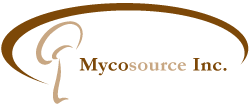Shiitake, comes from the Japanese Shii, which means oak and take which means mushroom. Shiitake is the second largest cultivated mushroom species in the world, second only to the white button mushroom, or champignon (Agaricus bisporus). Shiitake has been cultivated in China and Japan for hundreds of years. A major upswing in production occurred in the late 1940’s after the development of modern cultivation techniques by the Japanese. The Shiitake market in both fresh and dried format has grown to be a world wide multi-billion dollar industry, the bulk of which is still centered in the Orient with Japan and China being the largest producers and consumers. Mushrooms are a much more common staple in oriental households than they are in the West. The average consumer there is more aware of the excellent nutritional and medicinal properties of mushrooms and they are incorporated almost daily into their diets. North Americans on the other hand know little about mushrooms, in many cases have a slight fear of them, and often hold the misconception that they have little or no nutritional value. North America got a late start in Shiitake mushroom cultivation mainly because of a mistake by the US Department of Agriculture. For a long period of time the USDA was under the mistaken belief that Shiitake (Latin: Lentinula edodes) was a fungus that attacked railway ties so they banned importation of the live cultures into the USA. In 1972 the mistake was realized and restrictions were lifted. Since then production in the USA and Canada has steadily risen and Shiitake are now fairly common on supermarket shelves of big cities. Along with increased good press on exotic mushrooms the consumption of Shiitake and other mushrooms is likely to continue to increase.
See the nutritional profile of Shiitake in the Medicinal Mushrooms section of this website.
